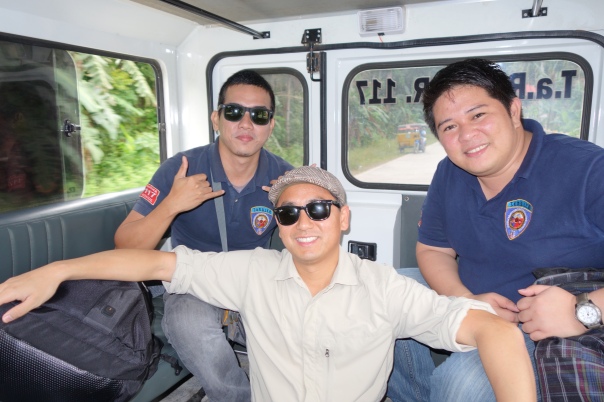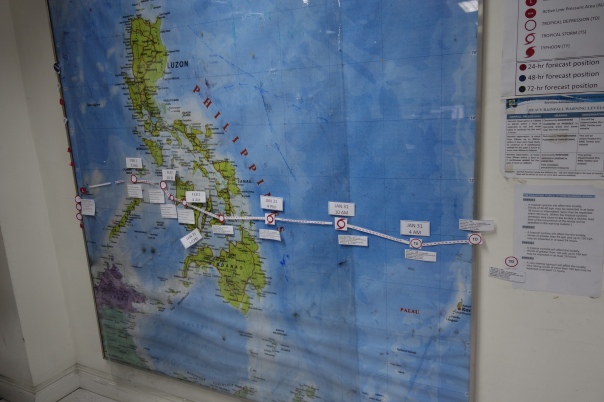#startuplife: The Evolution of Emergency Management in the Philippines
Posted by demfrancis
While SFDEM was visiting the TaRSIER 117 Operations Center an emergency call came in about a shooting in Taglibaran City. A call taker took the information from the caller and a radio dispatcher notified the Philippine National Police.
Startup life… It’s a lifestyle and a popular hashtag on Twitter or Instagram. It’s the hustle and the grind. The marathon hack-a-thons and the late night drinks where ideas are born. It’s developing the next product or service that’ll change all of our lives. In San Francisco, it drives our economy but there have been some unintended consequences as well.
Over here it’s different. In a two room building in the Bohol province of the Philippines they aren’t developing a new social network, e-commerce site, or dating service. The men and women of this startup don’t develop code or design products. Instead the scrappy staff that make up this startup are dispatchers, medics, and emergency managers and they are making TaRSIER 117 work with nothing more than sheer will. TaRSIER is short for Telephone and Radio System Integrated Emergency Response. 1-1-7 is the phone number Boholinos are encouraged to call when they have an emergency.
Alfonso is a proud Boholino and TaRSIER was his idea. Many years ago his father, Alfonso Sr., had a stroke so they jumped in a car and rushed him to the closest clinic. It took an hour and half…the damage was done. Bohol had ambulances, they had firefighters, and they had police officers but they weren’t coordinated. On top of that each had their own phone number and often that number was different from barangay to barangay (neighborhood to neighborhood). What was needed was central place in Bohol where aid and assistance could be coordinated effectively. Years later, Alfonso became the Provincial Administrator and in March 2011 TaRSIER 117 was launched with a staff of 8.
If TaRSIER was Alphonso’s idea, then Darwin and Mark are the key developers. Darwin was trained as a nurse, but had difficulties finding a nursing job in Bohol, so he worked for a customer call center. When he started at TaRSIER, he drew upon his background to develop the protocols and script his dispatchers use when people call. Mark is also a trained nurse and a former Philippine Red Cross volunteer. Mark uses his medical and Red Cross experience to train TaRSIER’s medical response and rescue teams. Together they are taking what they know and developing the lifesaving protocols, procedures and training for TaRSIER. If something isn’t working they learn from the experience and make adjustments. From what DEM could observe they are doing a phenomenal job with scarce resources and without formal training.
TaRSIER has grown to 47 people who staff and operate Bohol’s emergency operations center, emergency dispatch, and provide ambulance and rescue services. While they have grown with the support of Bohol’s governor, like any startup, they have had their challenges. Educating the public to call 1-1-7 has been an enormous task. TaRSIER averages 250 emergency calls per month for population of 1.2 million. By comparison, San Francisco’s 9-1-1 emergency dispatch center averages more than 3,000 calls per day for a similar population. It’s not because San Francisco has more accidents, fires, or crime. It’s because many people in Bohol in still prefer to seek out help on their own or call the police or fire department directly. If they do call, sometimes it’s for non-emergencies. TaRSIER staff cited examples of people calling to ask what the traffic is like. In other instances, the caller gets upset and asks the dispatcher why they are asking so many questions. DEM assured our counterparts that we also get similar calls.
Retention is another challenge for TaRSIER. Most of the team went to school to be nurses and have had a hard time finding a job in that field. As the staff gains experience and training, they often get offers for higher paying jobs as nurses or in more established emergency management departments in the Philippines. According to Alfonso, in the past year, 14 staff members have left TaRSIER for more lucrative or high profile opportunities.
Not all emergency management departments in the Philippines are startups. The National Disaster Risk Reduction and Management Council (NDRRMC) is the Philippine government’s version of our Federal Emergency Management Agency (FEMA). During our visit to NDRRMC headquarters at Camp Aguinaldo, we found highly professional, knowledgeable, and experienced emergency managers. In addition to earthquakes, the Philippines must contend with 15 to 20 typhoons each season. While NDRRMC is nowhere near a startup, their focus has shifted from managing the response to reducing risk through preparedness.
The Philippines has invested time and resources in engaging the public through both digital and traditional social networks. Facebook is the primary method of digital social networking since it is what most Filipinos use. NDRRMC has also formed a public-private partnership with the country’s mobile providers and developed a smartphone app that provides useful emergency information that is set to launch in the summer of 2014.
The staff at the NDRRMC knows that government can’t be the only answer before, during, and after an emergency. They are investing time in local leadership at the barangay level. People everywhere, whether it is in the Philippines or San Francisco, are likely to listen to information if it is from friend, family member, or other trusted source. This is why the NDRRMC is enlisting church leaders, school teachers, and barangay captains to help Filipinos get more prepared.
Manila’s emergency management agency is in a state somewhere between TaRSIER and the NDRRMC. The Manila DDRMC (MDDRMC) has taken steps towards preparing for the hazards that may face the city’s 1.6 million inhabitants. MDDRMC is building a new combined emergency operations center and emergency dispatch center at Manila City Hall. The center will coordinate everyday emergency calls as well as respond during special event or disaster. DEM was impressed by MDDRMC’s due diligence in designing their combined center. Manila officials built a small demonstration facility and then required every hardware and software vendor to provide a proof of concept for their products before asking for bids. As a result, they could test equipment and software before purchasing them.
While TaRSIER, NDRRMC, and City of Manila are different stages of evolution and capability they were all put to the test in some way in the fall of 2013. DEM’s next post will focus on the response and recovery and lessons learned from the deadliest earthquake in the Philippines in 23 years and the strongest typhoon in recorded history.
Posted on February 25, 2014, in 911, Alert and Warning, Disasters, EMS, Preparedness, Recovery, Resilience, Stories and tagged 9-1-1, Bohol, Bohol Earthquake, Community Resilience, Disability Preparedness, Disaster Response, earthquake, EMS, Philippines, San Francisco Department of Emergency Management, San Francisco-Manila Sister Cities Committee. Bookmark the permalink. Leave a comment.









Leave a comment
Comments 0